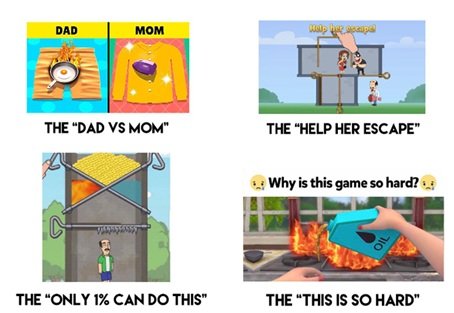How many times have you seen an ad for a mobile game that looked absolutely amazing only to download it and realize it’s nothing like what was shown? Personally, it’s happened to me a hundred times. But why? What’s the point of advertising a game with something that barely resembles reality?
Here’s a little spoiler: it’s a marketing strategy. And it works. Take Evony, for example it has over 100 million downloads on Google Play. How is that even possible? The answer lies in a single word: Whale.

What Does “Whale” Mean?
In the gaming world, a “Whale” is a user who spends a lot of money through in-game microtransactions. Whales make up a tiny percentage of players often less than 2% but they generate a huge chunk of the game’s revenue.
Now, if your game gets 100 million downloads, that means you might hook around 2 million high-spending players. So the more people you trick into downloading the game, the higher your chances of catching a Whale.
That’s why the only real goal of these misleading ads is to get you to install the app. Developers know full well that many users will uninstall it soon after.
Isn’t This Kind of Advertising Illegal?
In theory, yes. But in practice? Not really.
These companies often don’t break the law because they technically show minigames in the ads that do appear somewhere in the full game just not as the core gameplay. So it’s more “dishonest marketing” than outright false advertising. Unfortunately, that’s not illegal in most cases.
The Power of A/B Testing
Ever noticed different ads for the same game? That’s not a coincidence. It’s a strategy called A/B testing, where companies release multiple versions of the same ad at once. After a short time, they see which one gets the most downloads and keep only that one.
Then, they tweak the winning ad (adding new visuals, catchy lines, or better calls to action), and run new tests. It’s a constant cycle until they find the version that generates the most installs.
Sometimes, the fake minigames in the ads become so popular that developers decide to actually build them after seeing how well the ad performs. In other words, instead of building a product and then advertising it, they create an ad first, and only if it works, build the game around it.
What Are Developers Really After?
So here’s the question: if those minigames are so popular they drive millions of downloads, why not make a full game out of them?
Because getting you to download the game is only half the goal. The real money comes from keeping the Whales playing and spending. That means the game needs to be addictive and psychologically manipulative.
Minigames like the ones shown in ads are fun, but they’re not effective at creating spending addiction. So instead, developers build games with:
- Skill-based bottlenecks
- Limited-time offers
- Exclusive characters or skins
- Pay-to-progress mechanics
All designed to keep high spenders hooked.
The Ugly Side of Mobile Gaming
So yeah, it’s kind of a dirty world the mobile gaming industry. Ads are misleading, games are engineered for addiction, and players are seen as walking wallets.
But now you know the trick. Next time you see a flashy ad for a mobile game that looks too good to be true… it probably is.




